Creating a Global Sustainability Collaborative – One Community Weekly Progress Update #205
Creating a global sustainability collaborative makes sense if our intent is a truly sustainable planet for all people everywhere. Open source and free-shared sustainable approaches to food, energy, housing, education, for-profit and non-profit economic design, social architecture, fulfilled living, and global stewardship practices can stimulate global collaboration and innovation and forward this goal and all these areas for The Highest Good of All.
- Here’s our project overview
- Here’s our world-change methodology
- Here’s how this becomes self-replicating
- Here’s how we are open source and free-sharing all the do-it-yourself designs

OUR MAIN OPEN SOURCE HUBS
Click on each icon to be taken to the corresponding Highest Good hub page.
One Community’s physical location will forward the movement of creating a global sustainability collaborative as the first of many self-replicating teacher/demonstration communities, villages, and cities to be built around the world. This is the February 26th, 2017 edition (#205) of our weekly progress update detailing our team’s development and accomplishments:
Creating a Global Sustainability Collaborative
One Community Progress Update #205
Here is the bullet-point list of this last week’s design and progress discussed in detail in the video above:
CREATING A GLOBAL SUSTAINABILITY COLLABORATIVE INTRO: @1:03
CREATING A GLOBAL SUSTAINABILITY COLLABORATIVE HIGHEST GOOD EDUCATION: @2:00
- Transferred all of written content for the Fulfilled Living Lesson Plan to the website (see below)
- Behind the scenes: completed 100% of the written part of the Consensus and Decision Making Lesson Plan
- Completed the first 25% of the mindmap for the Play Lesson Plan (see below)
- Continued creation of renders for The Ultimate Classroom (see below)
- Created the initial layout for The Ultimate Classroom component of the developing Highest Good education introductory video (see below)
CREATING A GLOBAL SUSTAINABILITY COLLABORATIVE HIGHEST GOOD FOOD: @3:16
- Completed edits and additional content needed to bring the Transition Kitchen page to 90% complete (see below)
- Ashwin Patil continued with his 19th week developing the new Search Engines for our site (see below)
CREATING A GLOBAL SUSTAINABILITY COLLABORATIVE HIGHEST GOOD HOUSING: @3:54
- Created new needed for the standardized AutoCAD layers and line-weights template and tutorial (see below)
- Alena Thompson completed her 3rd week helping with the Net-zero Communal Bathroom Designs (see below)
- Christian Ojeda completed his 4th week helping with the heat-recycling Communal Eco-shower designs (see below)
- Jennifer Zhou helped create the formatting and initial presentation of the Communal Eco-shower heat exchanger engineering details (see below)
- Adrienne Gould-Choquette finished her 10th week helping create the standardized AutoCAD layers and line-weights template and tutorial (see below)
- Fernando Remolina continued with his 13th week of managing the Vermiculture Bathroom development with the 9th week of help from Lin Xu (see below)
- Dean Scholz continued helping us create quality Cob Village renders (see below)
- Adding details to Dean’s previous work, Guy Grossfeld added people and nature elements to create two new final views of the Cob Village (see below)
- Hamilton Mateca finished his 32nd week helping with the Compressed Earth Block Village design details (see below)
- Aparna Tandon additionally continued her work on the Compressed Earth Block Village external elements (see below)
CREATING A GLOBAL SUSTAINABILITY COLLABORATIVE DUPLICABLE CITY CENTER: @6:53
- Dipti Dhondarkar continued with her 28th week of work on the lighting specifics for the City Center (see below)
- Haoxuan “Hayes” Lei and Shuna Ni continued their work on the City Center structural engineering (see below)
- Ramya Vudi and Shubham Agrawal continued their work on the energy infrastructure for the City Center with Mike Hogan (see below)
- Renan Dantas continued with his 9th week working on the Duplicable City Center AutoCAD updates (see below)
CREATING A GLOBAL SUSTAINABILITY COLLABORATIVE HIGHEST GOOD SOCIETY: @8:33
- Finished another several rounds of developing the new Highest Good education video (see below)
- Hannah Gibbs completed her 5th week of helping develop the Taxes and Sustainable Community Building page (see below)
CREATING A GLOBAL SUSTAINABILITY COLLABORATIVE SUMMARY: @9:27
-
-
- How you can most help us right now and how anyone can help
-
CLICK HERE IF YOU’D LIKE TO RECEIVE AN EMAIL EACH WEEK WHEN WE RELEASE A NEW UPDATE
YOU CAN ALSO JOIN US THROUGH SOCIAL MEDIA
ONE COMMUNITY WEEKLY UPDATE DETAILS
CREATING A GLOBAL SUSTAINABILITY COLLABORATIVE HIGHEST GOOD EDUCATION PROGRESS
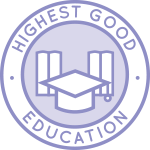 One Community is creating a global sustainability collaborative through Highest Good education that is for all ages, applicable in any environment, adaptable to individual needs, far exceeds traditional education standards, and more fun for both the teachers and the students:
One Community is creating a global sustainability collaborative through Highest Good education that is for all ages, applicable in any environment, adaptable to individual needs, far exceeds traditional education standards, and more fun for both the teachers and the students:
-
-
- Learn about the components: Education open source hub
- Learn how the components work together: How to use the Education for Life Program
-
This last week the core team transferred all of the written content for the Fulfilled Living Lesson Plan to the website, as you see here. This lesson plan is purposed to teach all subjects, to all learning levels, in any learning environment, using the central theme of “Fulfilled Living”.
Behind the scenes, we completed 100% of the written part of the Consensus and Decision Making Lesson Plan.
We also completed the first 25% of the mindmap for the Play Lesson Plan and added the theme images to the play lesson plan page.
In addition, the core team continued creation of renders for The Ultimate Classroom. We updated the windows, tables and chairs for the blue, indigo and red room, added items to the orange room, and rendered the entry doorway area.
We also created the initial layout for The Ultimate Classroom component of the developing Highest Good education introductory video.

Created Initial Layout for The Ultimate Classroom Component of the Highest Good Education Introductory Video
CREATING A GLOBAL SUSTAINABILITY COLLABORATIVE HIGHEST GOOD FOOD PROGRESS
 One Community is creating a global sustainability collaborative through Highest Good food that is more diverse, more nutritious, locally grown and sustainable, and part of our open source botanical garden model to support and share bio-diversity:
One Community is creating a global sustainability collaborative through Highest Good food that is more diverse, more nutritious, locally grown and sustainable, and part of our open source botanical garden model to support and share bio-diversity:
-
-
- Learn about the structures: Hoop House Hub | Aquapini & Walipini Open Source Hub
- See what we’ll be growing: Gardens & Hoop Houses | Large-scale Structures | Food Forest | TA
-
This week, the core team completed edits and additional content needed to bring the Transition Kitchen page to 90% complete.
Ashwin Patil (Web Developer) continued with his 19th week developing the new Search Engines for our site. This week’s work was finishing adding the final links to the Highest Good Food search engine.
CREATING A GLOBAL SUSTAINABILITY COLLABORATIVE HIGHEST GOOD HOUSING PROGRESS
 One Community is creating a global sustainability collaborative through Highest Good housing that is artistic and beautiful, more affordable, more space efficient, lasts longer, DIY buildable, and constructed with healthy and sustainable materials:
One Community is creating a global sustainability collaborative through Highest Good housing that is artistic and beautiful, more affordable, more space efficient, lasts longer, DIY buildable, and constructed with healthy and sustainable materials:
-
-
- Learn about: Our Upcoming Crowdfunding Campaign
- Learn about the different village models: 7 Sustainable Village Models
- Visit the open source portals for the first two: Earthbag Village OS Hub | Straw Bale Village OS Hub
-
This week the core team created easier to read and website optimized versions of all the images needed for the standardized AutoCAD layers and line-weights template and tutorial.
Alena Thompson (Mechanical Engineer) completed her 3rd week helping with the Net-zero Communal Bathroom Designs. This week she researched filtration options and worked out the details necessary to design the barrel collection, storage, and filtration system shown here.
Christian Ojeda (Mechatronic Engineer) completed his 4th week helping with the heat-recycling Communal Eco-shower designs. This week’s focus was researching a new design for the heat exchanger and updating the sink designs with a new location for the point-of-use electric water heater.
And Jennifer Zhou (Web Designer) helped create the formatting and initial presentation of the Communal Eco-shower heat exchanger engineering details shown here:
Adrienne Gould-Choquette (Mechanical Engineer) also finished her 10th week helping create the standardized AutoCAD layers and line-weights template and tutorial. This week’s focus was more integration of feedback and writing all the content you see here for the Tips and Tricks section of the tutorial.
Fernando Remolina (Industrial Engineer specializing in Project Management) continued with his 13th week of managing the Vermiculture Bathroom development with the 9th week of help from Lin Xu (Mechanical Engineering Student). This week’s focus, as shown here, was on more updates and design explorations for the removable compost receptacle attachments.
And Dean Scholz (Architectural Designer), continued helping us create quality Cob Village (Pod 3) renders. Here is update 57 of Dean’s work developing this progression of 30 images for the room lighting for the Eastside living spaces:
Adding details to Dean’s previous work, Guy Grossfeld (Graphic Designer) added people and nature elements to create these two new final views of the Cob Village Roof View Looking Southwest:
…. and this Cob Village – Inside South Wing Looking North view.
Hamilton Mateca (AutoCAD and Revit Drafter and Designer) also finished his 32nd week helping with the Compressed Earth Block Village (Pod 4) design details. This week’s focus was more render tests and texture updates for the kitchen, main entry, and living spaces:
….and creation of this final render of the main entryway looking Southeast.
Aparna Tandon (Architect) additionally continued her work on the Compressed Earth Block Village external elements. What you see here is her 17th week of work, focusing on continuing the development of the layout and landscaping details in front of the structure.
CREATING A GLOBAL SUSTAINABILITY COLLABORATIVE DUPLICABLE CITY CENTER PROGRESS
 One Community is creating a global sustainability collaborative through a Duplicable and Sustainable City Center that is LEED Platinum certified/Sustainable, can feed 200 people at a time, provide laundry for over 300 people, is beautiful, spacious, and saves resources, money, and space:
One Community is creating a global sustainability collaborative through a Duplicable and Sustainable City Center that is LEED Platinum certified/Sustainable, can feed 200 people at a time, provide laundry for over 300 people, is beautiful, spacious, and saves resources, money, and space:
-
-
- Learn about this building and it’s function: Duplicable City Center Open Source Hub
-
This week Dipti Dhondarkar, (Electrical Engineer) continued with her 28th week of work on the lighting specifics for the City Center. This week’s focus was continuing the process of learning how to use the Dialux software, modeling the City Center Social Dome bathrooms, and continuing lighting testing with different floor and wall colors.

Creating a Global Sustainability Collaborative – Working on the Lighting Specifics for the City Center
Haoxuan “Hayes” Lei (Structural Engineer) and Shuna Ni (Masters of Mechanical Engineering and Civil Engineering PhD) also continued their work on the City Center structural engineering. This week’s focus was continuing the roof designs and working out more details for the column flange and weight specifics, as shown here.
Ramya Vudi (Electrical Engineer) and Shubham Agrawal (Electrical Engineer) continued their work on the energy infrastructure for the City Center. What you see here are a couple photos from the weekly collaborative calls with Mike Hogan (Automation Systems Developer and Business Systems Consultant and this week’s research into what is needed to connect to and sell solar power back to the grid.

Creating a Global Sustainability Collaborative – Working on Energy Infrastructure for the City Center
And Renan Dantas (Mechanical Engineer) continued with his 9th week working on the Duplicable City Center AutoCAD updates. This week’s focus was continuing to integrate the new dome geometry into the Master File and simplification and standardization of the Faster File layers.
CREATING A GLOBAL SUSTAINABILITY COLLABORATIVE HIGHEST GOOD SOCIETY PROGRESS
 One Community is creating a global sustainability collaborative through a Highest Good society approach to living that is founded on fulfilled living, the study of meeting human needs, Community, and making a difference in the world:
One Community is creating a global sustainability collaborative through a Highest Good society approach to living that is founded on fulfilled living, the study of meeting human needs, Community, and making a difference in the world:
-
-
- Read the Highest Good society overview: Highest Good Society
- Learn about the model for fulfilled living and sharing: A Day in the Life
- Learn about the 4 economic models: RBE | For-profit | Non-profit | Entrepreneurship
- Learn about our open source community collaboration and management software: The Highest Good Network
-
This last week the core team finished another several rounds of developing the new Highest Good education video. What you see in the background here is the most recently developed and tested video and graphics.
Hannah Gibbs (Web Developer) also completed her 5th week of helping develop the Taxes and Sustainable Community Building page. This week’s focus was creating and updating the site with more new graphics and formatting updates so everything looks good on phones too.
AND WE PRODUCED THIS WEEKLY UPDATES BLOG – CLICK HERE TO SUBSCRIBE
FOLLOW ONE COMMUNITY’S PROGRESS (click icons for our pages)
INVESTOR PAGES
GET INVOLVED
CONSULTANTS ● WAYS ANYONE CAN HELP ● MEMBERSHIP
CLICK HERE FOR ALL PAST UPDATES
WHAT ONE COMMUNITY IS CREATING
One Community is creating a place to grow together and change the world together. We are creating a space that helps each other live in integrity with each other and the planet as we strive to be the greatest versions of ourselves. We do this by harmoniously respecting each other, nature, and the rest of our one shared planet.
Our goal is to demonstrate what we feel is the most sustainable, healthy, and fun environment we can create. A place based on compassion, kindness, and collaboration. This replicable community will serve as an example for what is possible.
Throughout our design process we are open sourcing and free-sharing everything needed for construction and replication. This includes what we call “Highest Good” approaches to food, energy, housing, education, for-profit and non-profit economics design, social architecture, fulfilled living, stewardship practices and more. We are creating these resources for implementation as individual components or complete developments called teacher/demonstration hubs. These hubs will help launch additional hubs as awareness and knowledge grow. This would lead the way for creating a global sustainability collaborative.
CREATING A GLOBAL SUSTAINABILITY COLLABORATIVE BUILDING THE FIRST OF MANY
One Community will be the first teacher/demonstration hub. It will function as an experiential-learning model that facilitates mass participation to address humanity’s most pressing challenges through: A replicable model for expansion, building seven self-sufficient village/city prototypes, becoming the world leader in open-source sustainability solutions, and evolving and expanding ALL aspects of sustainable living.
WHY ONE COMMUNITY IS CREATING THIS
The One Community self-replicating model is capable of creating a sustainable planet within 30 years. We will achieve this by establishing successful teacher/demonstration hubs on every continent. Villages include designs appropriate for each of the five main types of climates. They also include options for even the most challenged economies. These hubs will collaborate with one another, share ideas, resources, and work together as a network to heal the planet. They will also transform the global lifestyle to a more enjoyable, fulfilling, healthy, and sustainable one. This would lead the way for creating a global sustainability collaborative.
The specifics of how One Community is accomplishing this can be found on the One Community Solution Model to Create Solution-creating Models Page. Research supporting and showing the benefits of a model like this can be found on our Research and Resources Articles Archive.
Even if we don’t achieve our ultimate goal of global transformation, a self-replicating teacher/demonstration model like this will take a relatively short period of time to positively affect millions while inspiring millions more. For One Community residents (the Pioneer Team), the idea of creating and sharing the social and recreational experience with visitors is also fun, exciting, fulfilling, and an additional reason why we are creating this.
 One Community
One Community




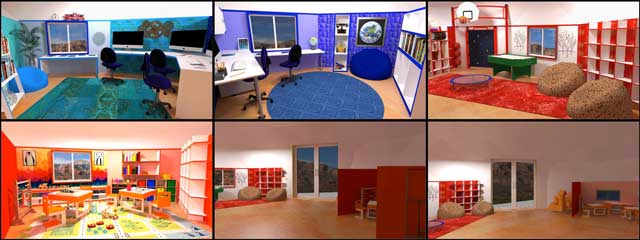





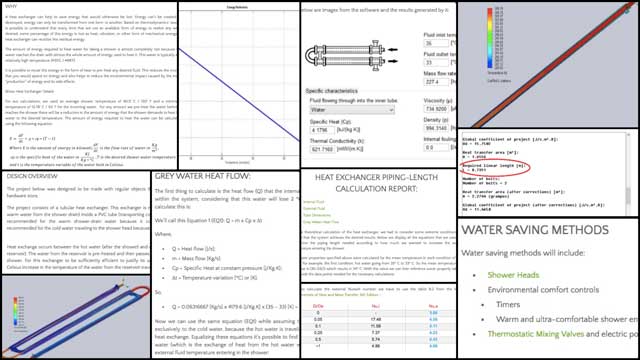





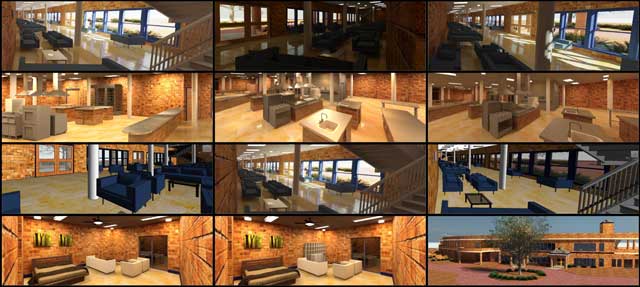
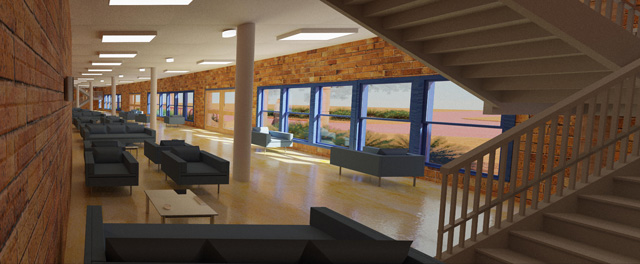


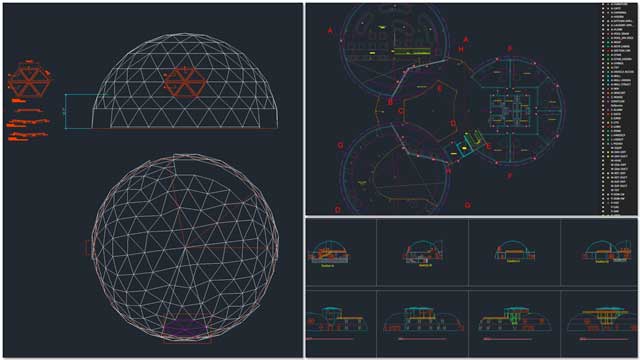

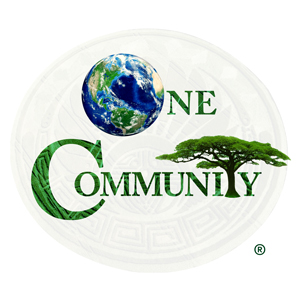


Connect with One Community